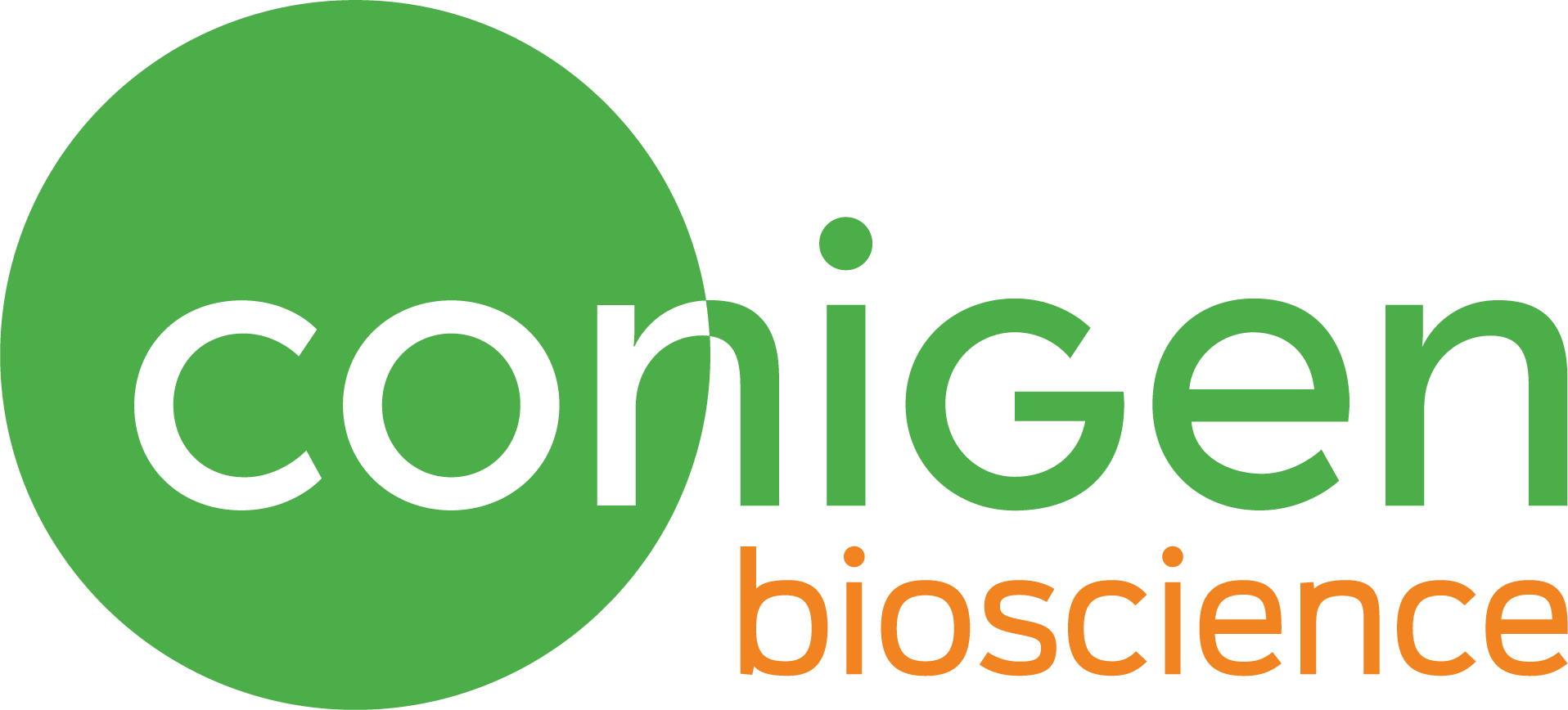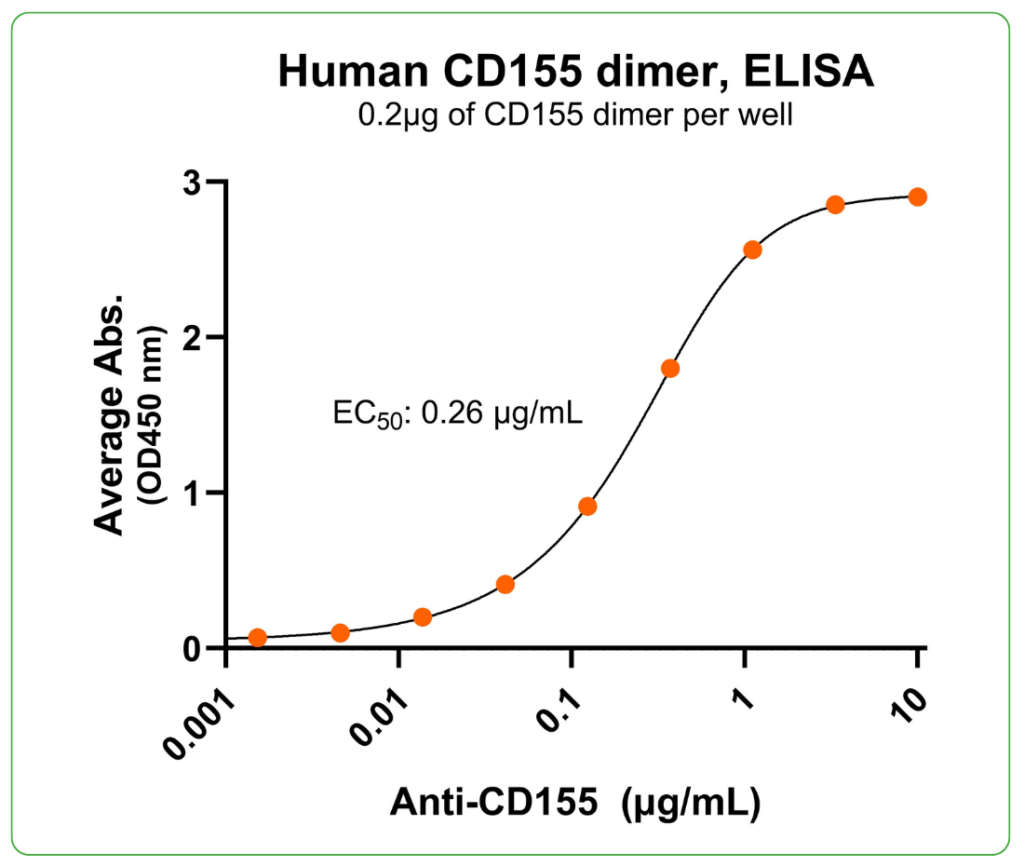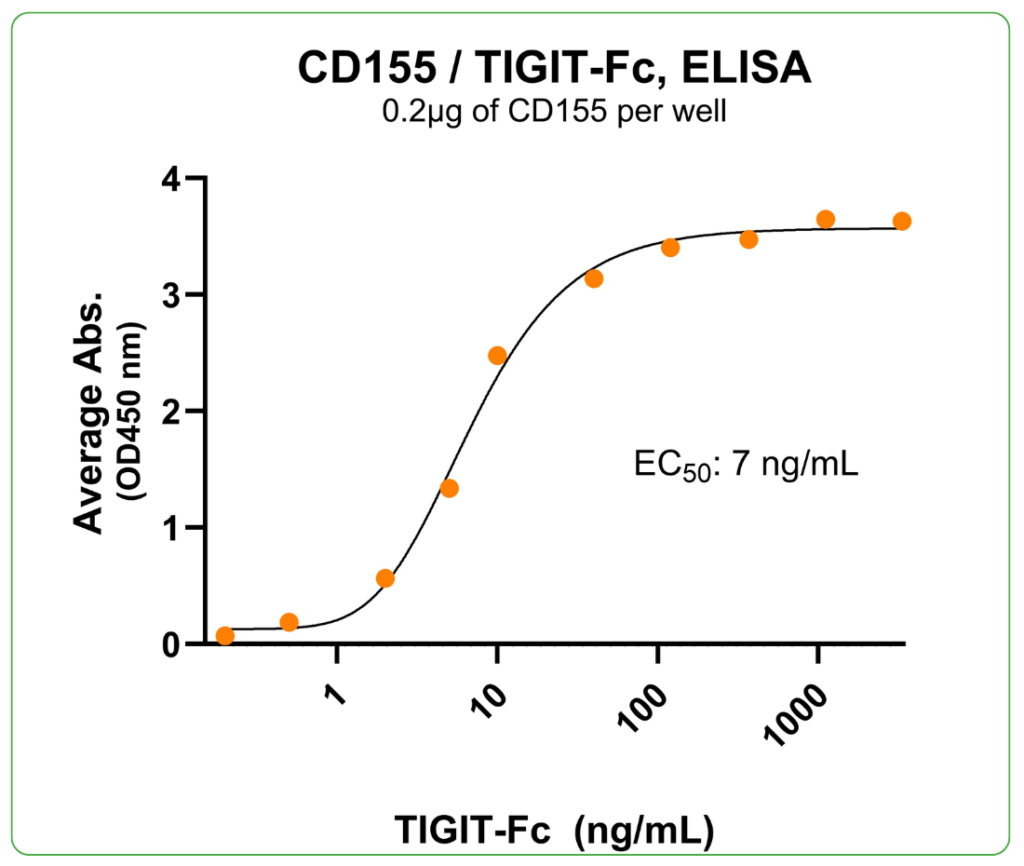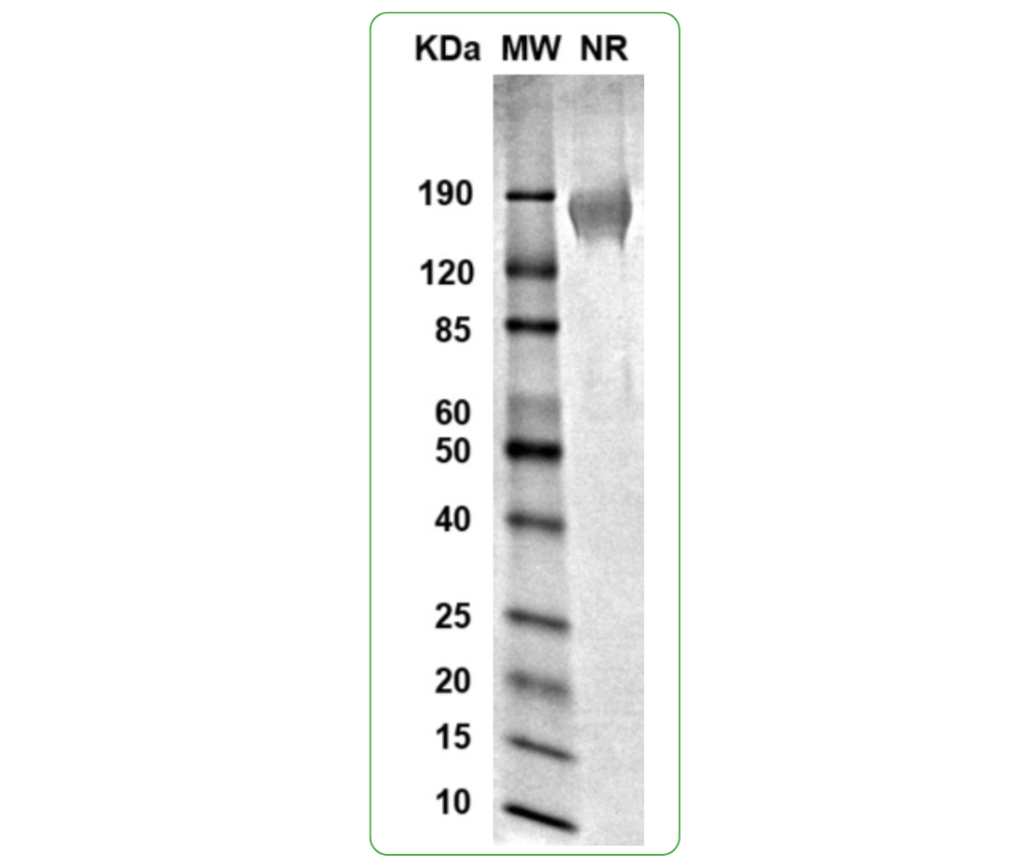Bioactive, Human CD155 Dimer, His Tag
| Product Code | CSP-24029 |
| Expression Host | HEK293T |
| Verified Applications | ELISA for CD155-specific antibody and TIGIT protein binding assays. SPR & BLI for CD155-specific antibody and TIGIT protein binding assays. |
| Suggested Applications | ELISA for CD155-specific antibody and TIGIT ligand protein binding assays. SPR & BLI for CD155-specific antibody and TIGIT protein binding assays. Animal immunization, RUO. |
| Purity | Greater than 90% dimer form as determined by SDS-PAGE under non-reducing condition. |
| Amino Acid Range | Trp21-Asn343 |
For Research Use Only (RUO)
Price: $125.00
Price: $195.00
Price: $350.00
Price: $750.00
Price: $2,500.00
Bioactivity – Antibody Binding
Immobilized human CD155 dimer protein, His Tag (Cat. No. CSP-24029) at 2 μg/mL (100 μL/well) can bind anti-human CD155 monoclonal antibody with half maximal effective concentration (EC50) range of 0.21-0.83 μg/mL (QC tested).
Bioactivity – Ligand Binding
Immobilized human CD155 dimer protein, His Tag (Cat. No. CSP-24029) at 2 μg/mL (100 μL/well) can bind human TIGIT dimer protein, with half maximal effective concentration (EC50) range of 4-16.2 ng/mL (QC tested).
Specifications
Formulation: 0.22μm filtered PBS, pH 7.4
Shipping: Frozen Dry Ice
Storage: -80°C
Human CD155 (cluster of differentiation 155) is a cell-surface Type I transmembrane glycoprotein that belongs to the Nectin/Nectin-like family. CD155 dimerization has emerged as an important factor in various diseases, especially cancer, poliovirus infection, and autoimmune disorders. Recombinant CD155 dimer protein (CD155 dimer, CSP-24029) is a cis-dimer protein and contains the CD155 extracellular domain (UniProt# P15151, amino acids Trp21-Asn343) fused with a proprietary dimer motif followed by a His tag at the C-terminus. This dimeric protein is expressed in HEK293 cells. The CD155-His dimer protein is bioactive and can enhance the binding to TIGIT with significantly increased binding potency compared with the CD155 monomer. It also binds CD155-specific antibodies. This CD155 dimer can be used as an antigen for in vitro assays, antibody screening, and as an immunogen for immunization to generate antibodies targeting more conformational epitopes.
Protein Name: CD155
UniProt #: P15151
Predicted Molecular Weight: 150 kDa
SDS PAGE Molecular Weight: The migration range of the dimer under non-reducing condition is 120-190 kDa on SDS PAGE.
Protein Construct: CD155 dimer protein contains a CD155 extracellular domain (Uniprot# P15151) fused with a proprietary dimer motif followed by a His tag at the C-terminus.
Background
Human CD155 (cluster of differentiation 155) is a cell-surface type I transmembrane glycoprotein that belongs to the Nectin/Nectin-like family. It is also known as Poliovirus Receptor (PVR), HVED, NECL5, Necl-5, PVS, TAGE4, and FLJ25946. It consists of three extracellular immunoglobulin-like (Ig-like) domains (D1-D3), one transmembrane region, and a C-terminal cytoplasmic domain. CD155 is widely expressed on various cell types and often overexpressed on cancer cells. CD155 dimerization has emerged as an important factor in various diseases, especially cancer, poliovirus infection, and autoimmune disorders. Upregulation of CD155 in several types of human cancers is associated with a poor prognosis. Although CD155 itself is not an immune checkpoint, it’s a ligand for checkpoint receptors like TIGIT (T-cell immunoreceptor with Ig and ITIM domains), CD226 (DNAM-1), and CD96. The interactions between CD155 and its receptors on immune cells modulate immune responses, such as T cells and natural killer (NK) cells. This makes CD155 a critical player in immune regulation and a promising target in checkpoint cancer therapies.
Alternate Names:PVR, HVED, NECL5, Necl-5, PVS, TAGE4, FLJ25946



